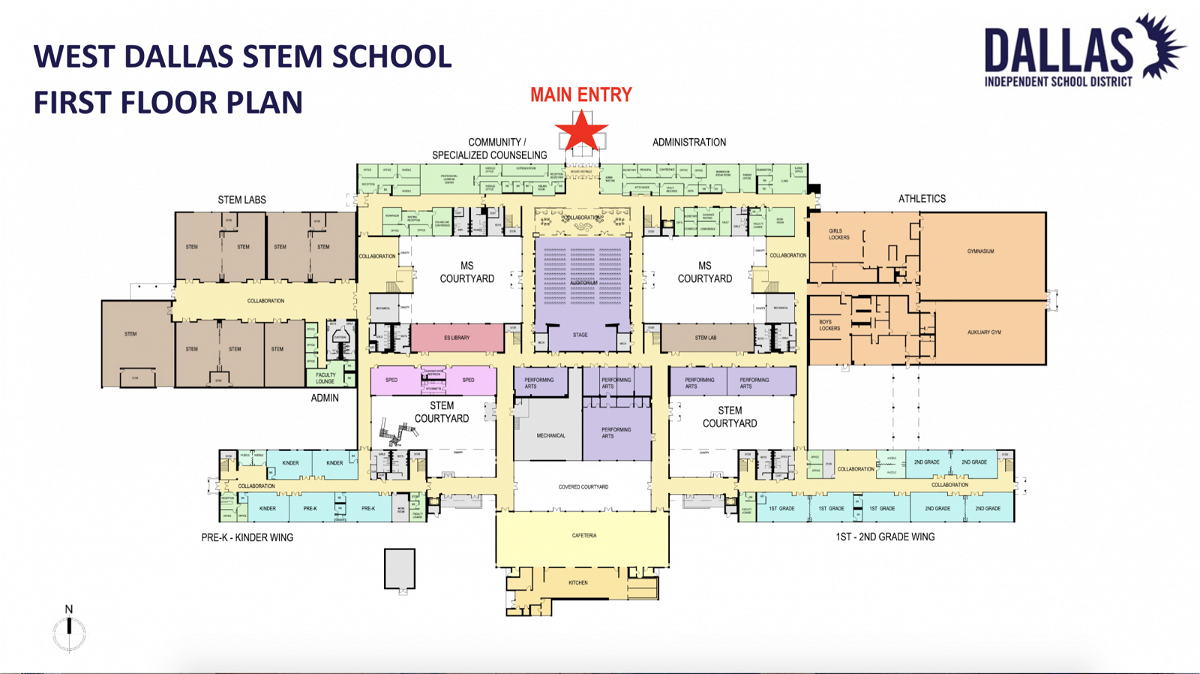The future STEM school in West Dallas named its first principal this month, more than a year before the school is expected to open.
Marion Jackson, who has worked in Dallas ISD for nearly 15 years, will lead the unique school designed for kindergarten through eighth-grade students. It will be centered around education in STEM, which stands for science, technology, engineering and mathematics. DISD, Southern Methodist University (SMU) and Toyota USA Foundation have partnered together with the goal of developing an innovative school that can give students a foundation for future career success while working to meet the needs of the West Dallas community.
The West Dallas STEM school will be located in the renovated Pinkston High School building, while Pinkston High School will reopen in a new building at 3719 Greenleaf St. The STEM school will open in fall 2021 for seventh and eighth-graders, and the new Pinkston will open in January 2022.

Although the STEM school will be open-enrollment, inviting any students in DISD to attend, priority will be given to students living in West Dallas. The goal is to have all available seats in the school filled by students in surrounding neighborhoods.
“We want West Dallas students to get a state-of-the-art education that has previously not been available to them,” says Annie Wright, the director of evaluation at SMU’s Center on Research and Evaluation.
Several elements will set the West Dallas STEM school apart from other elementary and middle schools. STEM education was chosen as its curriculum focus because of the numerous and well-paying job opportunities in the field.
“When we look at the jobs that are in demand and where there are openings, they often require a STEM background,” says Colleen Casey, who is overseeing Toyota’s efforts toward the school.
“The introduction of STEM and science is a benefit,” says Raúl Reyes, a West Dallas resident who is the executive advisor of the school’s steering committee “It is something [students] can build on as they continue their education.”
The school also will work with nonprofits in West Dallas to address major needs of the community, such as providing meals and creating more after-school care.
“This school is designed to serve the entire family unit,” says Katrina Martinez, SMU’s project manager for the West Dallas STEM school. “This school will live within and for the community rather than just being a school in the community.”
The renovated school will even feature a community center with extended hours before and after school and on the weekends, she says, where parents can spend time and work on volunteer projects.

The partners responsible for creating the school, DISD, SMU and Toyota, have tried to make sure that the West Dallas community is involved in planning the school. Various design teams have been formed to include West Dallas community members in order to hear their opinions and ideas about the school’s physical design, curriculum and ways it can support the community.
“The partnership focuses on creating solutions to problems identified within and by members of the school community,” says Shakeatha Butler, director of DISD’s office of transformation and innovation.
Although he is optimistic about the benefits the school will provide to the West Dallas community, Reyes says more participation is needed from both school partners and community members in order for the school to be a success.
“Understand, we are all in this together,” Reyes says, emphasizing that DISD, SMU and Toyota need to be consistently present and visible within the community, beyond planning efforts, by attending all neighborhood meetings, while West Dallas community members should be more involved and engaged in the school’s development by joining design teams and providing feedback.
“It’s in our interest that the school succeeds,” Reyes says. “It’s in their interest that the community succeeds.”
Casey says that Toyota and the rest of the partners hope to create a school with highly engaged and energized students who are proud to attend the school, skilled teachers who welcome change and adaptation, many community programs to meet the needs of families, and continued engagement of the partners and the community.
“This is an opportunity to bring all of these different viewpoints and partners together,” Casey says, “to achieve something amazing.”


Leave a Reply